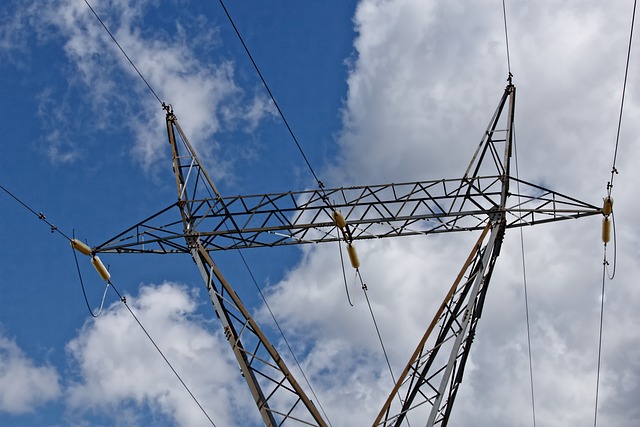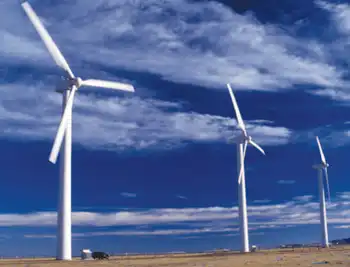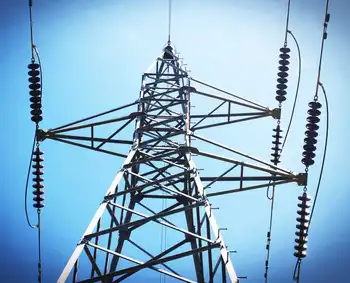Reducing carbon emissions no easy task for Europe
By International Herald Tribune
Protective Relay Training - Basic
Our customized live online or in‑person group training can be delivered to your staff at your location.

- Live Online
- 12 hours Instructor-led
- Group Training Available
As industrialization worsens pollution across the planet — the International Energy Agency, in Paris, forecasts a 50 percent rise in emissions by 2030 - Europe has laudably tried to take a lead in finding a solution.
In March 2007, months before the first cracks in the financial system appeared, EU members pledged themselves to a set of ambitious targets to be reached by 2020: to cut their greenhouse gas emissions 20 percent from 1990 levels; to obtain 20 percent of their primary energy from renewable sources, up from 6 percent in 2005; and to cut energy consumption 20 percent. The hope is to draw the United States and others into a broad international program at UN climate change talks in Copenhagen next year to agree on a successor to the Kyoto Protocol, which expires in 2012.
But Dieter Helm, a professor at Oxford University, described the 2020 targets as "political rhetoric" to give the union a veneer of leadership before the Copenhagen meeting. Europe's partners will not be naïve enough to believe the commitments, making it "a very odd way to begin negotiations," he said.
Naïveté aside, the 2020 targets, which incorporate commitments by individual countries, face a mounting list of problems. One immediate issue is cost.
"The public is convinced the plan is needed, and it will proceed in one way or another," said Colette Lewiner, head of the energy practice at the French consulting firm Capgemini. "But the goals are unrealistic because of the investments needed and the lack of real support from some governments."
The price tag is hard to estimate because of subsidies and the fact that some private investment will eventually be clawed back. As a starting point, the IEA said over the summer that $45 trillion might be needed globally over the next half-century to prevent energy shortages and greenhouse gas emissions from undermining growth. A report sponsored by the European Commission in March forecast that reaching the 2020 goal would require €672 billion, or $853 billion.
"For many of the countries the costs will be enormous," Helm said. Latvia, Sweden, Finland and Austria were already meeting 20 percent of their energy requirements from renewable sources in 2005, the latest year for which the commission has published data, but in Britain, the Netherlands and Belgium, the figure was less than 3 percent; in Germany, it was 4.8 percent; Italy, Spain and France were around 6 percent.
"Britain is further behind than most, and it will be very expensive for them to support renewables on the scale envisaged," said Helm, who is advising the British government on the matter. In June, Ernst & Young, the consulting firm, said that to meet the commitments, British customer bills would rise 20 percent, excluding inflation, by 2020 "and probably much more," as utilities pass on the additional costs to clients. Such a rise would swell the numbers of people unable to afford adequate heating, a state known as "fuel poverty."
Lewiner forecast that French electricity bills would rise 10 percent by 2020 if the country achieved compliance.
A long, deep recession might help fulfill part of the commitment — cutting emissions in the West amid declining output and weak consumption — but the credit crisis and its industrial consequences could actually work against the goals.
The economic squeeze will make it more difficult to finance large projects, like new wind farms, in the next few years, a crucial period if projects are to become operational before 2020. And more worrying, economic trends could also mean heavier reliance on coal.
"A credit-crunch-induced recession implies lower emissions over 2008 to 2010 but also higher coal-fired electricity output over the entire 2008 to 2020 period as planned investments in new capacity are put on hold," Mark Lewis, an analyst at Deutsche Bank, said in a recent report.
The share of highly polluting coal as a global energy source is already increasing. High oil and natural gas prices, though down since the summer, have encouraged a switch to less costly and plentiful coal in India and China.
The U.S. Energy Information Administration forecasts that coal's share of world energy production will climb to 29 percent in 2030 from 27 percent in 2005, with 80 percent of the expected increase coming from India and China.
Coal is "the fuel of choice around the world," Helm said. "You either solve the coal pollution problem or force China to close down its plants." Alternative energy technologies are nowhere near reaching the scale required to become real substitutes: "Wind farms on the Outer Hebrides aren't going to scratch the surface," Helm said, referring to the island chain off the west coast of Scotland. Moreover, wind power, which is the renewable energy source of choice for some European countries, must be backed by coal and natural gas because it is unreliable.
Many, including the IEA, now see a solution in equipping coal power plants with technology to capture and sequester carbon dioxide. The technology, known as CCS, captures emissions, compresses them and pipes them into underground storage, probably in a depleted oil or natural gas field. Hope is being placed on a pilot project by Vattenfall of Sweden at a coal plant in Lausitz, Germany. And yet CCS plays no real part in the EU's 2020 goals.
Another problem for the EU is that the oil majors are proving reluctant partners. Royal Dutch Shell recently said that it was reviewing participation in the Cirrus Shell Flat Array in England, the world's largest proposed offshore wind farm. "The real profits are years into the future, and they have to pay dividends next year," Helm said. That runs counter to government's need for heavy investment now.
Utilities like RWE, E.ON, Dong, EDF and Iberdrola, with a direct stake in electricity provision, have shown more interest and made significant investments. Still, Helm said, they need "a regulatory regime that will ensure that they get their costs back - and that's not necessarily there."
Meanwhile, political squabbling has begun. At a meeting in October, some leaders, notably from Italy and Poland, threatened to scupper the EU targets unless their industries were given more favorable treatment.
France, a nuclear leader, has lobbied for targets to be "noncarbon" rather than renewable, which would allow the inclusion of atomic energy. That effort was blocked by Germany in 2007 in a move that now looks outdated.
"What we need is a low-carbon option, not just renewables, and that means you have to bring nuclear power into the equation," Helm said.
Similar political divisions have obliged the EU planners to skirt the issue of whether to apply carbon taxes on products derived from polluting industries.
A carbon tax might at least reinforce the EU's existing emissions trading program, introduced in 2005 and now in its second phase of development, which enables companies with high abatement costs to trade allowances with businesses where those costs are lower. Experience with the system has raised questions about permit allocation and possible price manipulation. Still, it has had the merit of creating a price for the credits and should eventually increase the cost of fossil fuel power, encouraging fuel efficiency. Trade in carbon credits reached €45 billion last year, three times more than in 2006, according to Capgemini, and the system is due to be extended to include a broader ranger of polluting industries in a third stage from 2013 to 2020.
"Governments need money, and many tax ideas will be well received, but the real question is what to do with the money from a tax," Lewiner said. "Are you developing cleantech in Europe or paying down government deficits? Or both?"
Whatever the outcome of the argument over taxes, all the renewable technologies being pursued present huge challenges.
In Britain, for example, wind is seen as an important part of the solution: To reach the target of generating 20 percent of energy from renewable sources, 25 percent to 40 percent of the country's electricity would have to come from wind by 2020, Helm estimates. That would require an increase of 30 percent to 35 percent from current levels, delivered in just 11 years.
Aside from the financial challenge, there are turbine supply constraints, tussles over the siting of wind farms and grid integration concerns. Some companies in Scotland have been told to join a 13-year waiting list and to deposit millions of pounds while waiting to be connected, according to local news reports.
Solar electric power, meanwhile, is still at an early stage of development. Using photovoltaic cells to convert solar energy into electricity has merits, particularly for rooftop water heating. But recently, share prices for solar companies tumbled on fears that demand would shrink and that panel prices would slip after Spain and Germany, the largest markets, scaled back government subsidies. Madrid in particular cut the preferential tariff rate paid to solar energy generators, saying the sector had already surpassed capacity targets set for 2010.
Conventional hydroelectric power is a mature technology, although wave and tidal technologies are still nascent. Norway, France, Sweden and Italy have the largest total installed capacity and could expand. But growth will be limited by environmental opposition to using the few remaining untouched rivers and by falling water tables in many regions.
Likewise, the expansion of biofuels has run into hurdles, with ethanol production in particular linked to rising food prices and environmental damage.
Regardless of what Europe does, the real issue to be debated at the Copenhagen meeting and beyond is whether China and India can agree on binding caps, and whether Washington can be tempted to participate in a significant deal. Without that broad buy-in, European leaders may face heavy pressure from consumers and taxpayers to rethink their goals.











